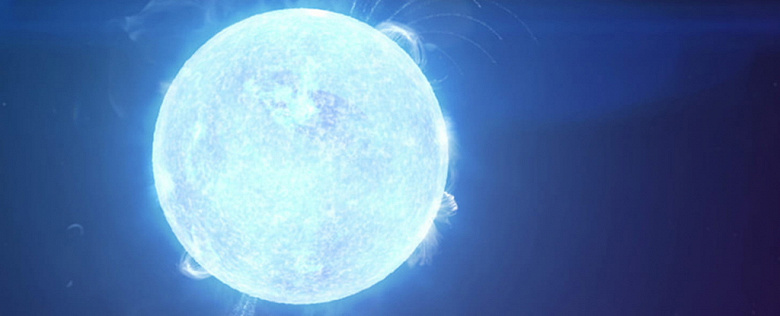New information about the strange behavior of matter in neutron stars
Deep inside large neutron stars, phenomena occur that change the nature of matter.
Atoms consist of three main particles: protons, neutrons and electrons. Protons and neutrons are made up of elementary particles called quarks, while electrons are considered fundamental particles. Under normal conditions, quarks are always bound to each other; they cannot exist freely, like electrons. However, a new study published in the journal Nature Communications demonstrates that quarks in neutron stars can be «freed».
Neutron stars are the remnants of large stars. They represent the last stage of evolution, in which the star's dense core resists gravitational collapse, becoming a neutron star. When nuclear fuel is depleted, the only resistance to gravity is the quantum pressure of neutrons. However, the neutron star model suggests that its core consists of neutrons that are on the verge of «self-destruction». In this state, neutrons can have enormous energy and interact with each other, but they still remain neutrons due to the close coupling between quarks.
However, some scientists suggest that in extreme gravity, neutrons «may relax», allowing quarks to move around and mix. In this case, the neutron star may have a dense core consisting of quarks. Unfortunately, direct experiments on neutron stars are not available to astrophysicists, but scientists use equations of state to approximate and study the behavior of dense nuclear matter.
Equation of state — it is a mathematical approach to determining the key properties of a substance. The Tolman-Oppenheimer-Volkoff (TOV) equation is used to describe neutron stars. But solving this equation is complex, and the results for the presence of a quark core in neutron stars are far from clear-cut. Conventionally, when using it to understand whether neutron stars have a core of quarks, the answer will be, — «possibly».
In a new study, scientists used Bayesian statistics to estimate the probability of having a quark core. They used observational data on the mass and size of neutron stars and concluded that massive neutron stars, more than twice the mass of the Sun, have a greater than 80% chance of having a quark core. This indicates that there is a certain mass threshold after which a neutron star begins to have a quark core.
These conclusions are based on a small number of observations and require further research with a larger sample of data. With more information and analysis of more neutron stars, scientists will be able to better determine the exact transition from quark-core stars to regular neutron stars.
These new discoveries expand our understanding of the Universe and help us understand its most extreme processes. They raise many questions about the nature of matter and the evolution of stars, to which scientists are still looking for answers.

